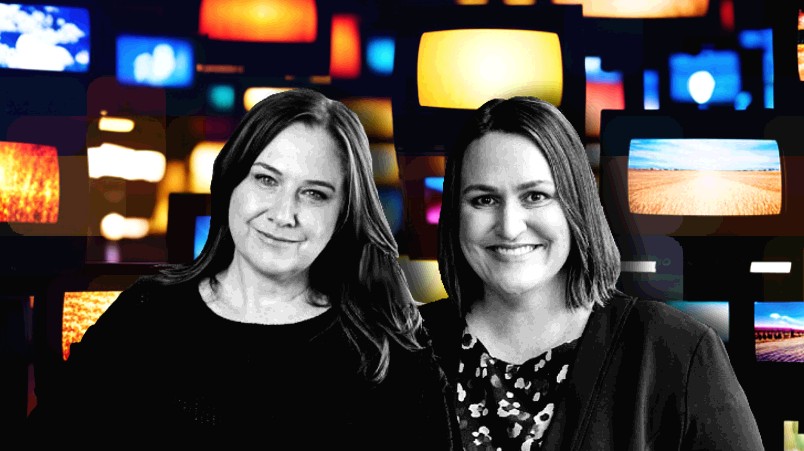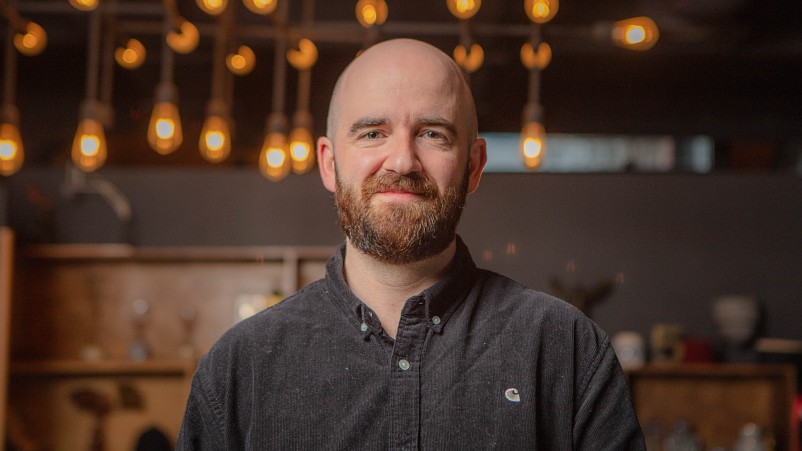‘I drank the Kool-Aid’: Seven CMO Mel Hopkins says marketers, agencies buying bad narrative and bias on total TV audiences versus YouTube, streamers – and Foxtel

Seven West Media's Mel Hopkins and Natalie Harvey
As far as mea culpas go, Seven’s CMO and audience boss Mel Hopkins has just delivered one of the biggest from a high profile marketer. Hopkins is weeks out from Seven’s annual upfronts presentation for 2024 at SxSW - she’s also the executive producer for the gig this year – but the supercharged marketing leader is a little more than miffed at market behaviour and perceptions perpetuating a false narrative and bias around total TV viewing versus YouTube, streaming and the rest. Hopkins admits she was guilty of the same “bias” while she was Optus CMO, before joining Seven in March. So could she - would she - have listened if she was not working for a broadcaster?
So here’s where I’m a little embarrassed as a marketer. I did not really appreciate [broadcast] video on-demand very well. I thought it was just catch-up viewing [of free-to-air shows] and free [advertising] bonus. I didn’t really pay that much attention to it. My fault.
Embarrassed
“So here’s where I’m a little embarrassed as a marketer,” Mel Hopkins admits upfront in a conversation with Mi3 on her awakening to “real” total TV” audience numbers – not overnight ratings – versus the hip and hot alternatives in streaming, social video, YouTube and even Foxtel.
“I did not really appreciate [broadcast] video on-demand very well,” she admits. “I thought it was just catch-up viewing [of free-to-air shows] and free [advertising] bonus. I didn’t really pay that much attention to it. My fault.”
Indeed, it was only last July Hopkins joined one-time anti-Googler, Mark Ritson, in a series for YouTube extolling the virtues of the platform for building brands and marketers. “When Mel Hopkins from Optus says she loves what YouTube has done for the brand building campaign… I buy it,” Ritson told Mi3 last year after the "Long and Short" series launched.
Flipped
But this week Hopkins flipped her message, even challenging the recent comments at YouTube’s Brandcast event by Google’s Australian boss Mel Silva that circa 40 per cent of people are switching off linear TV viewing. “Google needs to Google the population of Australia because when I share how many watch free-to-air TV, measured by OzTam, they’ve got their figures completely wrong.”
And the same goes for the streaming services, argues Hopkins. “The streamers are not getting the lion’s share of viewing – it’s actually television.”
Hopkins says she would never advocate for a brand to put all its investment into TV – there’s a role for YouTube and the rest. But she says market perception TV and “total TV” – that is linear and online broadcaster viewing - is broken and in a perpetual death spiral is entirely wayward.
Hopkins has been quietly road-testing with a small group of blue chip marketers and media agency bosses a myth-busting deck on audience numbers for total TV viewing – linear and video – designed to arrest the wayward conversations and perceptions in market on total TV versus streaming and TV alternatives.
Rookie mistake
“If you take The Rookie, which has the same amount of episodes as Succession, and you ask who's bigger in Australia, The Rookie or Succession, the numbers are the numbers. It’s The Rookie and 42 per cent of the audience streamed that show. Home and Away is the most streamed show in all of Australia… Home And Away… are you serious? Yes, it's unbelievable. When Seven ran a documentary on John Farnham that reached 2.5 million Australians, within 72 hours he was back in the charts. That just shows the power of mass culture. When you're building brands, it's about being in the right place at the right time with the right message. It's never just about the media channeI."
Hopkins says Seven’s rivals have not been as strong in their audience delivery as Seven this year. Her argument is those not doing their due diligence on total TV viewing numbers only entrenches skewed perceptions.
Hopkins’ market briefing is loaded with figures countering a range of “misguided market views”, including Netflix being a runaway subscription powerhouse. 7Plus logged in viewers, she says, trump Netflix figures each month. YouTube’s reach claim of 17 million Australians each month is matched by Seven’s total TV figure. When Nine and Ten are added, the figure is circa 24 million. Her list of myth-busting counterpoints is long and large.
No to Ted Lasso
“There's a perception in the market more people watch Netflix than they do free-to-air. In my previous role [at Optus], if someone had said to me I could buy a 30-second ad on Ted Lasso [AppleTV], I probably would have spent some ridiculous amount of money doing it because of the engagement reach. And what I really, really believed is that Netflix was bigger than than 7. It’s not the facts.”
At the pointy end of the debate on why the specialists in media agencies are mostly adding to misconceptions, Seven West Media’s National Sales Director, Natalie Harvey, says it’s mostly around buyers “being hung up on cost… they’re saying an eye ball is an eye ball and we need to compete on price".
Cost hangups
“It feels like they're just so hung up on cost… so they go television costs have gone up, audiences are down, CPMs are up. So they’ll take TV money and throw it over there without regard for the consequences around effectiveness.”
Moreover, Harvey says many advertisers and buyers have been slow to alter their buying strategies to “converged viewing” – that is free-to-air TV and broadcaster on-demand video together. Both execs argue this counters the TV audience decline commentary.
“So many of our customers are not ready for it. They're so under the pump with just getting through each day. But we're starting to get briefs that say they want 100% convergence. That's how we want to work. We’re going to go really hard on effectiveness.”
In the end though, how does Hopkins think she can bust these wayward perceptions she speaks of when on the other side as a non-media CMO, she couldn’t be cracked?
Facts and followers
“You are correct,” she says. “The job we have to do as an industry, and that I want to champion and will keep pushing really hard around, is sharing the facts. I’m a big believer that if you get a few people on-board that look to reconsider, actually what happens in this market is people start to follow. But we have to get the facts in front of people first. It is going to take time to change the conversation. My really big concern is, and I'm not saying everyone is like this, but at the heart of successful brand building is creating memories and ensuring people are primed in the right moment to consider your brand. There's not enough of that.”



